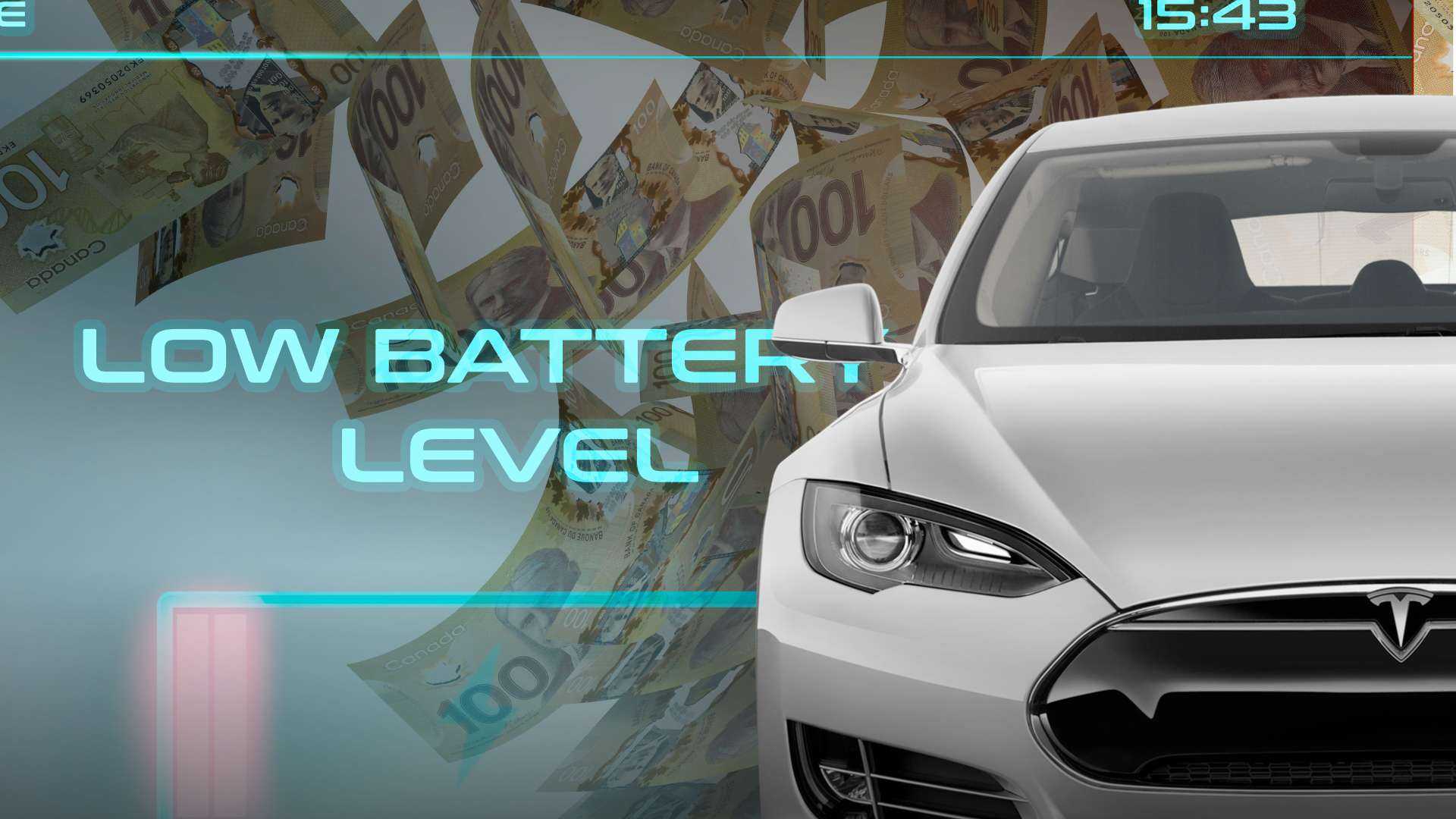on
BY SIMONE J. SMITH
“You’ll own nothing. And you’ll be happy.”
Only a few years ago, The Great Reset was dismissed and labelled a conspiracy theory. Now, terms like: “The Great Reset,” and “New World Order’ are widely used by governments, world leaders and influential individuals.
“Blah, blah, blah. Here we go again!” I get that everything else that is going on in your life might be taking precedence, but I want to be clear; the Great Reset will affect your life, so it’s important to understand it, so you can make the right decisions for you and your family.
On the surface, it may seem chaotic and random, but behind world events are a core group of people driving the global changes we are experiencing. As your community media source, it is our job to not only connect the dots, but to provide you with enough information so that you can take action now. Are you ready? Let’s get into it.
The quote that I started this article with is something that was actually said; now, it can be viewed as a prediction, and is based on just one of eight made by the World Economic Forum’s (WEF) network of Global Future Councils. As this quote went viral, “the prediction” roused suspicion about the WEF’s intentions for many of us.
Things really became apparent after the WEF announced its ‘Great Reset’ agenda to the world in June 2020 (Schwab, 2020), and the reaction to the prediction became stronger and louder. COVID-19 was identified as the principal reason for pursuing the agenda, but the WEF claimed that it also addressed “The climate and social crises,” emerging even before the pandemic’s onset (Schwab, 2020). Now, the prediction was being characterized as an actual ‘goal’ of the WEF.
Naturally, in order to present you with quantifiable knowledge, I searched the internet to find information that discussed this very topic. I stumbled up, “A future with no individual ownership is not a happy one: Property theory shows why (September 2023), and found a research study that examines the prediction from a property perspective. The authors state that, “By assuring access to the things to which humans relate, property ownership can support personhood, the realization of which is, we contend, a threshold requirement for human happiness.”
They argue that contrary to the WEF prediction, an owner-less future would not be a happy one for individuals. Ownership should thus be preserved as a property concept and they offer an aspiration for it that better supports not just human happiness, but also a more socially just, sustainable, and emancipatory future.
center>
They are slowly stripping away our sustainable, and emancipatory future, and they are bombarding us with distractions, and creating chaos in order to do so without resistance. Today we are going to speak on something that is in mainstream media, but has not been highlighted, or pieced together like I am going to do for you.
The End of the Gas Vehicle
The end of the road is coming for gas-powered vehicles in Canada as Environment Minister Steven Guilbeault finalizes new regulations mandating the transition to battery-operated cars, trucks and SUVs.
Automakers will have the next 12 years to phase out: combustion engine cars, trucks and SUVs, with a requirement to gradually increase the proportion of electric models they offer for sale each year.
Their claim is that this move fulfills a promise made by the Liberals more than two years ago to phase out the sale of combustion engine passenger vehicles by 2035 (Agenda 2030). It was applauded by multiple environment groups in early December 2023. Banning gas-powered cars by 2035 isn’t a particularly original thought: Japan, Chile, China, South Korea, the U.K. and others have already pledged to ban or severely restrict EV sales by 2035. This could almost be looked at like a “World Order,” couldn’t it?
It was also announced that production of Chrysler 300, Dodge Charger, and Dodge Challenger at plants across Ontario would be ending in 2024, and the factory will begin retooling and modernizing toward the company’s electric vehicle future. The move comes after a $3.6-billion investment for upgrades to both plants, announced last month.
During the announcement, the automaker said it hopes to diversify its ability to introduce battery-electric, or hybrid models to the production line at the Windsor Assembly Plant. The province is funding up to $287 million with this renovation.
Honda is also looking at several potential sites, including next to an existing automobile factory in the province of Ontario. It expects to decide by the end of 2024, with the new facility to go onstream as early as 2028. Honda already has plans to make EVs and batteries in the U.S. state of Ohio starting in 2026, so the proposed Canadian EV plant, if it goes online, will become its second in North America.
To encourage the switch to EVs, the U.S. government is offering tax breaks of up to $7,500 to buyers of EVs. For an EV to be eligible, it needs to meet certain requirements such as being assembled in North America and sourcing batteries from approved regions.
The Government of Canada knows that the higher upfront purchase cost of zero-emission vehicles (ZEVs) can make it more difficult to adopt this clean technology. So, what do they do? They come with an incentives program (Zero-Emission Vehicles, or iZEV) to help make buying an EV more affordable.
The iZEV Program offers point-of-sale incentives for consumers (subject to funding availability) who buy or lease a ZEV vehicle. Only the vehicles listed on the Government of Canada website are eligible for an incentive when they’re purchased or leased for at least 12 months, on or after the eligibility date.
According to Bloomberg, gas-powered models sold before 2035 will remain on the roads for many years after that, but no additional ones will be added. In 2023, about one in 10 new vehicles registered were electric, suggesting EV sales need to double within the next three years (have to stay online with the agenda). They already doubled in the last three years, growing from 38,425 EVs sold in the first nine months of 2020 to 132,783 in the first nine months of 2023.
The United States is pushing electric vehicle adoption federally with an emissions policy that will require more EVs to be sold so that overall emissions go down (getting rid of gas cars). The Federal Liberals in Canada, however, note that 10 states have EV sales mandates similar to Canada’s, including California. By 2027, they say, 40% of the North American auto market will be covered by a mandate like Canada’s.
This seems like a great, noble cause. Trying to address global issues and create positive global change for the world.
So, what’s the problem?
There are a few things to consider.
I want you to think about it, in just 13 years it will become illegal to purchase a new car, or truck powered by gasoline or diesel. The idea, of course, is to curb Canadian emissions by dramatically decreasing consumer demand for motor fuel. While electric vehicles (EVs) have gained popularity and attention for their environmental benefits and lower operating costs, there are some lesser-discussed issues and challenges associated with them.
First of all, the manufacturing process for batteries, especially lithium-ion batteries, involves mining and processing raw materials. This can have environmental and social impacts, including habitat destruction, water pollution, and concerns about labor practices in mining regions. The environmental benefits of electric vehicles depend on the energy sources used to generate electricity. If the electricity used for charging primarily comes from fossil fuels, the overall environmental impact may be less positive. The transition to renewable energy sources is crucial to maximize the environmental benefits of EVs.
Then there are the electric vehicle components, including batteries, which pose challenges in terms of disposal and recycling. Developing effective recycling processes for lithium-ion batteries is essential to minimize the environmental impact of e-waste from electric vehicles. While recycling efforts are underway, the industry is still working on efficient and cost-effective ways to recycle and repurpose used electric vehicle batteries. Finding sustainable solutions for end-of-life batteries is crucial to minimize environmental impact.
So, pretty phasing in EV’s (which are supposed to help with climate change), are actually going to be destroying our environment, the very environment that we are supposed to be saving.
Hmmmm!
Remember, the quote that we started with, “You’ll own nothing. And you’ll be happy.” Life is already a financial struggle for people, and we’re actually in the midst of a historically steep spike in the price of used cars. COVID-related supply chain shortages (most notably semiconductors) have slowed down the production of vehicles so sharply that if you own a 2018 car with fewer than 100,000 kilometers, you can probably flip it at close to 85% of the sticker price. Normally, you’d be lucky to get 50%. Really! Who is even going to be able to afford a car, oh yes! I forgot, they are establishing 15-minute cities that will have less parking spaces, and everything is 15 minutes away, so you won’t need a car.
“You’ll own nothing. And you’ll be happy.”
All of this has been decided by governments and independent people all in the name of your safety and protecting the environment. All under the direction to “trust the science” and “trust the experts” and “trust the data” without ever seeing the science or meeting the experts or reading the data.
Before you go putting blind faith in the World Economic Foundation, I want you to know that they are not here working for the people; they are working for themselves. To end this article, I want to break this down. The WEF is a private organization created and funded by wealthy individuals and companies. Membership is limited to those who can afford it (this is not any of us unfortunately). Members and representatives are not elected, they are chosen, and have been chosen for years).
They are a central, global organization trying to impose their world views and their agendas on individual governments, and all of us. Many of these people and organizations have conflicting interests and agendas that may benefit from certain actions and recommendations of the WEF. Members include large national and multinational corporations whose action, or inaction can impact governments and entire nations and economies and could be used to induce governments to: do certain things, introduce certain legislations, or take certain actions.
Any transformative agenda that promotes the abolition of individual ownership should be rejected on account of its failure to properly take account not only for human happiness, but of the human condition more generally.
Stay in the loop with exclusive news, stories, and insights—delivered straight to your inbox. No fluff, just real content that matters. Sign up today!
We, as humans are guaranteed certain things in life: stressors, taxes, bills and death are the first thoughts that pop to mind. It is not uncommon that many people find a hard time dealing with these daily life stressors, and at times will find themselves losing control over their lives. Simone Jennifer Smith’s great passion is using the gifts that have been given to her, to help educate her clients on how to live meaningful lives. The Hear to Help Team consists of powerfully motivated individuals, who like Simone, see that there is a need in this world; a need for real connection. As the founder and Director of Hear 2 Help, Simone leads a team that goes out into the community day to day, servicing families with their educational, legal and mental health needs.Her dedication shows in her Toronto Caribbean newspaper articles, and in her role as a host on the TCN TV Network.













